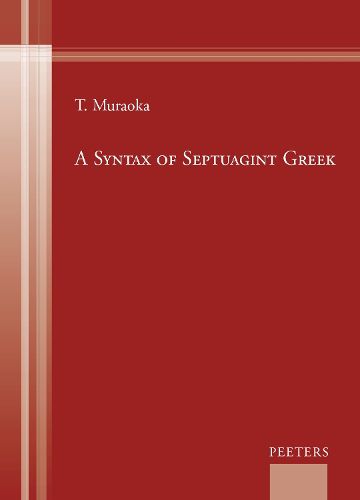Readings Newsletter
Become a Readings Member to make your shopping experience even easier.
Sign in or sign up for free!
You’re not far away from qualifying for FREE standard shipping within Australia
You’ve qualified for FREE standard shipping within Australia
The cart is loading…






This is the first ever comprehensive analysis of the morphosyntax and
syntax of Septuagint Greek. The work is based on the most up-to-date
editions of the Septuagint. The so-called Antiochene version of Samuel,
Kings, and Chronicles as well as Judges has been studied. Though this is
a synchronic grammar, and though not systematic, comparison with
Classical Greek, the Greek of contemporary literature of the
Hellenistic-Roman period, papyri and epigraphical data, and New
Testament Greek has often been undertaken. Even when analysing
translated documents of the Septuagint, the perspective is basically
that of its readers. However, attempts were made to determine in what
ways and to what extent the structure of the Semitic source languages
may have influenced the selection of this or that particular
construction by translators. At many places it is demonstrated and
illustrated how an analysis of the morphosyntax and syntax can
illuminate our general interpretation of the Septuagint text.
$9.00 standard shipping within Australia
FREE standard shipping within Australia for orders over $100.00
Express & International shipping calculated at checkout
This is the first ever comprehensive analysis of the morphosyntax and
syntax of Septuagint Greek. The work is based on the most up-to-date
editions of the Septuagint. The so-called Antiochene version of Samuel,
Kings, and Chronicles as well as Judges has been studied. Though this is
a synchronic grammar, and though not systematic, comparison with
Classical Greek, the Greek of contemporary literature of the
Hellenistic-Roman period, papyri and epigraphical data, and New
Testament Greek has often been undertaken. Even when analysing
translated documents of the Septuagint, the perspective is basically
that of its readers. However, attempts were made to determine in what
ways and to what extent the structure of the Semitic source languages
may have influenced the selection of this or that particular
construction by translators. At many places it is demonstrated and
illustrated how an analysis of the morphosyntax and syntax can
illuminate our general interpretation of the Septuagint text.